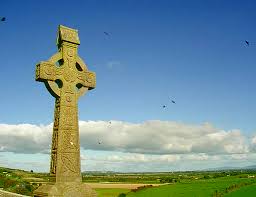Rohr: A Toxic Image of God
Your image of God creates you. This is why it is so important that we see God as loving and benevolent and why good theology is still important.
One mistaken image of God that keeps us from receiving grace is the idea that God is a cruel tyrant. People who have been raised in an atmosphere of threats of punishment and promises of reward are programmed to operate with this cheap image of God. They need deep healing, because they are actually attached to a punitive notion of God. Many experienced this foundational frame for reality as children, and it is hard to let go. It gives a kind of sick coherence to their world.
Unfortunately, it’s much easier to organize people around fear and hatred than around love. Most people who want to hold onto power view God as vindictive and punitive. Powerful people actually prefer this worldview, because it validates their use of intimidation. Both Catholicism and Protestantism have used the threat of eternal hellfire to form Christians. I am often struck by the irrational anger of many people when they hear that someone does not believe in hell. Threat of hellfire “works” because it appeals to the lowest level of consciousness, where we all start.
Much of Christian history has manifested a very different god than the one Jesus revealed and represented. Jesus tells us to love our enemies, but this “cultural” god sure doesn’t. Jesus tells us to forgive “seventy times seven” times, but this god doesn’t. Instead, this god burns people for all eternity. Many of us were raised to believe this, but we usually had to repress this bad theology into our unconscious because it’s literally unthinkable. Most humans are more loving and forgiving than such a god. We’ve developed an unworkable and toxic image of God that a healthy person would never trust. The mystical, transformative journey cannot take place until that image is undone. Why would you want to spend even an hour in silence, solitude, or intimacy with such a god?
It’s true that there are some troubling passages of Scripture; even Jesus used dualistic and judgmental statements. Jesus was an honest and wise teacher. He knew that clear-headed, dualistic thinking must precede non-dual or mystical thinking. Jesus was particularly emphatic about issues people normally want to avoid, especially social justice teachings. Here he used dualistic examples like God and mammon (Matthew 6:24; Luke 16:13), the rich person and the eye of the needle (Matthew 19:24; Mark 10:25), and the sheep and the goats (Matthew 25: 31-46). Jesus had to make these points absolutely clear, otherwise it’s far too easy to avoid issues of justice for the poor and inclusion of the outsider.
It seems to me that in Matthew 25, when Jesus appears to make threats of “eternal punishment,” he is making strong contrasting statements about issues of ultimate significance, calling the listener to a decision. The trouble with this passage is that we focus on the threat more than on Jesus’ positive promise of “eternal life.” Jesus presents the teaching first in a dualistic manner. When pressed, he explains it in a non-dual way that encourages universal compassion: “Whatever you did for one of these least brothers [and sisters] of mine, you did for me” (Matthew 25:40). Non-dual thinkers can see that he is creating a moral equivalence between what we do to the least of the brothers and sisters and what we do to Christ. So Matthew 25 is supreme dualism overcome by supreme non-dualism. That is what we need. First do your clearheaded, rational, logical study of all sides of the issue of concern. Then you will see that the issue deserves much more subtlety than taking one side and damning all others. Non-dual thinking allows us to calmly hear, calmly detach, and calmly see from a higher level.
In his book, Inventing Hell, Jon Sweeney points out that our Christian notion of hell largely comes from several unfortunate metaphors in Matthew’s Gospel. Hell is not found in the Pentateuch, the first five books of the Bible. It’s not found in the Gospel of John or in Paul’s letters. The words Sheol and Gehenna are used in Matthew, but they have nothing to do with our later medieval notion of eternal punishment. Sheol is simply the place of the dead, a sort of limbo place where humans await the final judgment when God will finally win. As Paul says in 1 Corinthians, in the end “God will be all in all” (15:28). Gehenna was both the garbage dump outside of Jerusalem–the Valley of Hinnom–and an early Jewish metaphor for evil (Isaiah 66:24). The idea of hell as we most commonly view it came much more from Dante’s Divine Comedy than the Bible. Dante’s Purgatorio and Inferno are brilliant Italian poetry, but horrible Christian theology. Dante’s view of God is largely nonbiblical; however, there are some great insights in the Paradiso.
In his book, Introduction to Christianity, Pope Benedict XVI explains his understanding of the curious phrase in the middle of the Apostles’ Creed: “[Jesus] descended into hell.” Benedict says that if Jesus went to hell, that means there is no hell–because Jesus and hell cannot coexist. Once Jesus got there, the whole game of punishment was over, as it were. One of the most popular icons in the Eastern Orthodox Church shows Jesus with his legs spread, bridging the abyss of hell, pulling people out of the darkness. This is called “the icon of icons” in the East because it shows the highest level of contemplative perspective and the essence of the Good News.




